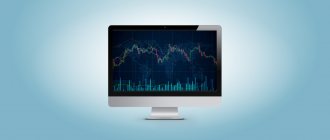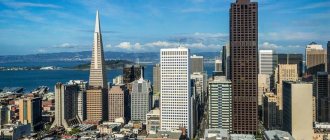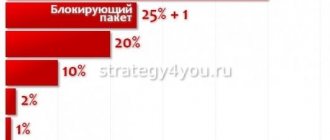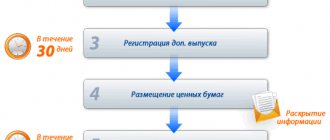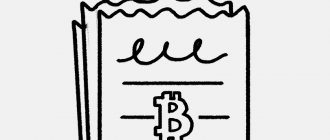Foreign securities, or rather their free circulation, are officially banned in many countries. Likewise, some states prohibit the withdrawal of national shares. But business is actively developing all over the world, and investors want to be able to make money on foreign companies. Depository receipts (DRs) solve this problem.
What are they and why are they needed?
The abbreviation ADR stands for American Depositary Receipt. This is a security that is a derivative financial instrument on shares of companies in different countries, provided that these shares are deposited with a custodian - a US depositary bank.
In simple terms, these are non-US stocks traded in America.
The lion's share (about 95%) of ADRs is issued by the three largest banks:
- JP Morgan Chase.
- Bank of New York.
- Citibank.
ADR payments are made only in dollars. The securities themselves are traded on US stock exchanges and over-the-counter markets.
If you invest in ADR, you will receive dividends and all the benefits of their appreciation.
Commissions
The custodian bank charges fees for ADRs and GDRs. The fee is 0.03–2% of the cost of the certificate. Some brokers cover such commissions at their own expense, others pass the costs on to the client.
The day the fee will be written off is known in advance. If you do not want to pay a commission, check with the broker the conditions: at whose expense these expenses are covered and on what day the write-off occurs. You can sell a depositary receipt on the day the payment is due, and then buy it back.
Types of ADR
Useful articles
Reviews about working as a trader: how beginners are scammed
25 Habits That Separate Rich People From Poor People +12 Things That Are Keeping You From Getting Rich
We destroy myths about “promoted” forex traders in Russia and the world
Is it possible to earn at least something on binary options + reviews from real traders
A company wishing to issue ADRs can choose the status of future securities. Then the type of ADR will depend on the goals of the issuing company.
Unsponsored-sponsored
Unsponsored are issued without a formal arrangement with the US depositary bank. ADR issuers are not required to disclose financial information under US standards. In essence, the company simply issues receipts for its shares.
Unsponsored ADRs will only go up if the firm does well. The securities are traded exclusively on the OTC market. Such ADRs are characterized by high risks and low liquidity.
As you understand, it is not a fact that at any given time there will be someone willing to buy these dubious assets from an investor. This means that it is better to avoid unsponsored ADRs, at least for beginners.
Level 1
Sponsored Level 1 ADRs are formed when the issuing company is ready to file simplified reporting under SEC standards.
There are the most tier 1 securities among ADRs. Such receipts are traded on OTC and on some exchanges, but are not eligible for listing on the NYSE, NASDAQ or AMEX.
Level 2
If an ADR issuing company wants to get on the largest stock exchanges, it must issue a second level for receipts:
- Fully register with the SEC.
- Report according to Form 20-F standards.
- Comply with GAAP standards.
Level 3
The third level obliges the issuer to register both its shares and receipts with the SEC. Plus:
- Report on Form F-1 and 20-F.
- Do not violate GAAP standards.
- Third-level ADRs on the stock exchange are equivalent to shares. They are also interesting to investors.
Public-private
Public receipts are all of the above.
Class 4 private receipts are not issued for all investors, but only for institutions whose capital is calculated at the lower limit of 100 million USD.
Rule 144A applies here without SEC registration.
Another type is Regulation S ADR. They are available exclusively to non-US residents and are not regulated. Issuers can reissue Regulation S into Level 1 securities when the restriction period ends.
Difference from RDR and GDR
ADRs are traded only on American exchanges. There are analogues:
- GDR - Global Depository Receipts for European markets.
- RDR - Russian Depository Receipts.
The latter are registered securities, issued by a Russian bank or stock exchange. Traded on Russian platforms. Can be in stocks or bonds. They have no nominal value and are undocumented. The owner of the RDR receives ownership of the securities of a foreign company.
It is beneficial for me and you to focus on level 2-3 receipts and GDRs, since other types are either unreliable, or inaccessible to mere mortals, or, like RDRs, unpopular.
How to find out the country of issue?
To determine the country of the issuer, we use the website isin.ru. Using the example of Tinkoff shares (TCS GROUP).
Enter the ISIN code in the search field. We look at the column “Name of issuer; country of issue." The last word (or rather the abbreviation) is exactly the country in which the Tinkoff company is registered.
Determining the country by ISIN
CY - what kind of country is this? How to translate this into Russian?
CY is the international designation for Cyprus. Explanation of meanings can be found here or here. Or independently in search engines using the phrase “classifier of countries of the world”.
Cyprus Classifier - CY
CYPRUS is offshore. The tax rate on dividends is 0%. Consequently, you will need to pay 13% tax in the Russian Federation on dividends received from Tinkoff.
Another example is stocks (ISIN - US98387E2054).
The country of registration of the company is the Netherlands. The country's tax rate on dividends is 15%. When receiving dividends, 15% tax was withheld from investors. This means you don’t need to pay anything in Russia.
Operating principle using a simple example
Imagine a foreign investor who wants to invest in MTS - mobile television systems. MTS shares are listed on the MICEX, and ADRs for MTS shares are traded on the US stock exchanges - the New York Stock Exchange and NASDAQ. An investor can choose where it is easier for him to complete a transaction and where it is more profitable to pay taxes.
Since Russian legislation related to stock trading has been developing recently and is far from imperfect, plus you will have to look for a broker who will provide access to the Russian stock exchange. The choice of a foreigner is obvious - buy “local” ADR.
By the way, this is one of the reasons why RDRs are not progressing and why Western investors prefer not to get involved with our sites.
More examples
You can buy 10 MTS shares on the Russian site. Or you can buy 10 ADR receipts for MTS shares traded on NASDAQ.
- Let the cost of one share on the Russian stock exchange be 250 rubles.
- Then, 10 shares will cost 2,500 rubles.
- At an exchange rate of 1 dollar 66 rubles, the cost of ten depository receipts will be 37.87 dollars.
ADRs are quoted and valued only in USD, which means that the exchange rate of MTS receipts will be sensitive to the ruble/dollar ratio.
In practice, the cost of a receipt and a share can differ by 10, 20 or even 30%, and in any direction.
Release mechanism
The procedure for issuing receipts is the same for American and Global receipts. For RDR there are slight differences. But, since we decided that this type of securities is not interesting to us, we will consider only ADR.
ADR issue
Sponsored receipts are, in most cases, issued by the bank. The company whose shares are being issued transfers its shares for safekeeping to this bank.
Classification
| Sponsored | |||
| Only for new promotions | Shares already outstanding | ||
| ADR 4 levels(144) | ADR Level 3 | ADR Level 2 | ADR Level 3 |
Unsponsored receipts are issued by the company itself for its own shares. From a development point of view, this is a dead-end branch.
Examples
Let me give a few examples of Russian issuers whose shares are traded in depositary receipts:
| Issuer's name | Ratio of number of DRs to number of shares | Listing |
| Gazprom | 1:2 | LSE (London), BSE (Berlin), FSE (Frankfurt), SGX (Singapore) |
| Lukoil | 1:1 | LSE, FSE, MSE (Munich), STU (Stuttgart), US OTC market |
| Magnet | 5:1 | LSE |
| Rosneft | 1:1 | LSE |
| Surgutneftegaz (prefs) | 1:10 | FSE, LSE |
| Ribbon | 5:1 | LSE |
Quotes and prices
Share prices and ADRs are correlated. Some investors try to monitor exchange listings with receipts and shares, enter into transactions when there is a price gap and close when the price of a cheaper asset approaches a more expensive one.
Of course, such a situation rarely arises. More often, it is more convenient for you, as an investor, to choose which instrument is more profitable to invest your money in. After all, conditionally, you can receive 20% more dividends on your capital by purchasing a receipt 20% cheaper than shares.
The chart shows a comparison of 2 prices: the candlesticks are the price in rubles on the MICEX, the red line is the ADR on the NYSE
The opposite situation is happening right now. MTS shares, which we considered as an example, are quoted on the MICEX at 251 rubles per unit. MTS ADRs in New York cost $7.45, and on the Berlin exchange they cost €6.45. Let's calculate where it is more profitable for an investor to buy an asset.
- The dollar to ruble exchange rate is 65.84.
- The euro to ruble exchange rate is 75.09.
Let's convert everything into rubles, the ADR price will be:
- Shares in Russia 251.
- Receipts in Europe 484.3.
- Receipts in the USA 490.5.
The question of which market is it profitable to invest in MTS right now disappears.
Table on taxes on dividends of shares and depositary receipts
I have prepared for you (and for myself) a cheat sheet for all foreign securities known to me from the Moscow Exchange.
| Ticker | Name | Country of registration | Dividend tax rate | Dividends |
| TCSG | Tinkoff Group | Cyprus | 0% | pays |
| Five | X5 Retail Group | Netherlands | 15% | pays |
| QIWI | KIWI | Cyprus | 0% | pays |
| POLY | Polymetal | Jersey Island | 0% | pays |
| AGRO | Rusagro | Cyprus | 0% | pays |
| ETLN | Etalon Group | Cyprus | 0% | pays |
| YNDX | Yandex | Netherlands | 15% | — |
| POGR | Petropavlovsk | Great Britain | 0% | — |
| HHRU | Head Hunter | Cyprus | 0% | pays |
| Mail.ru Group | Virgin Islands | 0% | — | |
| GLTR | Globaltrans | Cyprus | 0% | pays |
| MDMG | MD Medical Group (Mother and Child) | Cyprus | 0% | pays |
| LNTA | Ribbon | Cyprus | 0% | — |
| OKEY | OKAY Group | Luxembourg | 15% | pays |
| OZON | Ozone Holdings | Cyprus | 0% | — |
| GEMC | United medical group | Cyprus | 0% | pays |
| FIXP | Fix Price Group Ltd | Virgin Islands | 0% | pays |
We kindly ask you to report inaccuracies, innovations and changes in the comments. I will try to keep it up to date.
IMPORTANT!
Note to X5 shareholders...
The Ministry of Finance is proceeding to denounce the Double Taxation Agreement with the Netherlands. If the bill is signed and comes into force, then the tax on dividends will have to be paid twice: 15% in the Netherlands and 13% in Russia. Source.
Added September 2022.
Russia terminated its double taxation agreement with the Netherlands. For an investor, this means increasing the tax on dividends to 28-30% (15% will be withheld in the Netherlands / +13% must be paid in the Russian Federation, if the income is more than 5 million, then the tax rate is +15%).
Advantages and disadvantages
Benefits:
- Ease of investing in foreign companies; there are no restrictions on the purchase of ADR.
- You can invest money in a foreign company that generates profits above the market average.
- You will also benefit from the fact that ADR share prices are usually cheaper than the shares themselves.
- Professional market participants who do not belong to US jurisdiction register on the American stock exchange and trade their shares in two different countries.
Flaws:
- Payments for ADR transactions occur in dollars. USD is a relatively stable currency.
- Not all companies register ADRs for their securities. This means the choice is limited.
- Investments in companies that have ADRs often become illiquid. You may have to wait 5 years or more to realize attractive returns.
- Any violation of US ADR regulations will be severely punished by the SEC.




